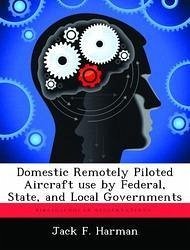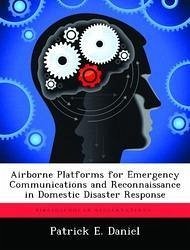
Domestic Remotely Piloted Aircraft use by Federal, State, and Local Governments
Versandkostenfrei!
Versandfertig in über 4 Wochen
52,99 €
inkl. MwSt.
Weitere Ausgaben:

PAYBACK Punkte
26 °P sammeln!
The United States military enjoys the continued growth of Remotely Piloted Aircraft assets and personnel. By 2015, Creech Air Force Base will employ almost one in every five active duty Air Force pilots. Remotely Piloted Aircraft are in such demand in Iraq and Afghanistan that they occupy over forty 24-hour continuous missions, planned to expand to over sixty within the next two years. However, with the drawdown in troops in both Iraq and Afghanistan inevitably approaching, the United States military will have a surplus of assets and operators undergoing training in the United States while wai...
The United States military enjoys the continued growth of Remotely Piloted Aircraft assets and personnel. By 2015, Creech Air Force Base will employ almost one in every five active duty Air Force pilots. Remotely Piloted Aircraft are in such demand in Iraq and Afghanistan that they occupy over forty 24-hour continuous missions, planned to expand to over sixty within the next two years. However, with the drawdown in troops in both Iraq and Afghanistan inevitably approaching, the United States military will have a surplus of assets and operators undergoing training in the United States while waiting for the next crisis. The military remains committed to its Defense Support to Civil Authorities requirements but needlessly restricts its support beyond emergency response due to the outdated United States Code and self-inflicted Department of Defense Directives. Unless the United States government, specifically the military, develops a system to allow Federal and State agencies to request habitual assistance from the military's Remotely Piloted Aircraft, those agencies will purchase separate equipment and operators. While military assets go operationally underused, the State and Federal agencies will not be able to fully exploit their expensive equipment and costly operators. However, if the Federal government implements an approach to maximize Remotely Piloted Aircraft efficiency and effectiveness, such as a system similar to the military's Close Air Support request system or an improved National Incident Management System, it would lower overall government costs through the sharing of equipment, bandwidth, and operators.












